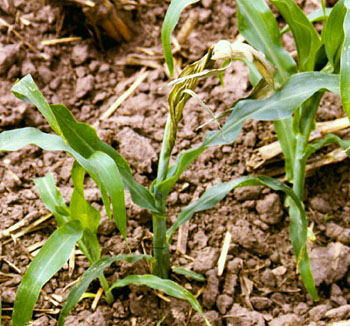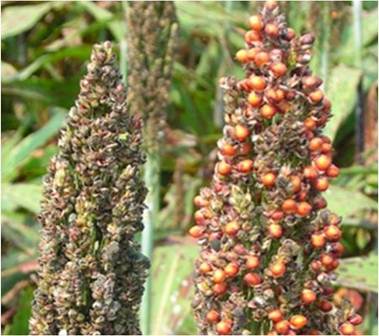
Coastal stalk borer
| Primefact number | Edition | Published | Author |
|---|---|---|---|
| 1516 | First | Aug 2017 | Plant Biosecurity and Product Integrity |


Coastal stalk borer (Chilo orichalcociliellus) is an exotic plant pest not present in Australia. This insect is a serious threat to Australia’s grains industry.
Coastal stalk borer (Chilo orichalcociliellus) is a stem boring insect which is an important pest of maize and sorghum. The coastal stalk borer caterpillars damage these crops by boring or tunnelling inside their plant stems.
Notifiable status
Coastal stalk borer (Chilo orichalcociliellus) is not a notifiable plant pest/disease in NSW.
However, if you suspect Coastal stalk borer (Chilo orichalcociliellus):
- Call the Exotic Plant Pest Hotline 1800 084 881
- Email biosecurity@dpi.nsw.gov.au with a clear photo and your contact details
A full list of notifiable plant pests and diseases can be found in Schedule 2 of the NSW Biosecurity Act 2015.
Description
Coastal stalk borer moths have small yellow-brown bodies with 15-30 mm wingspans. They have straw-yellow to ochre-yellow forewings with brown scales. The hindwings are dirty white-grey.
Pupae have shiny, light yellow-brown to dark red-brown bodies up to 15 mm long.
Caterpillars have dark red-brown heads, four purple-brown longitudinal stripes and dark-brown dorsal spots along their creamy white to yellow-brown bodies. Fully grown caterpillars are up to 25 mm long.
The flat, oval, creamy white eggs are about 1 mm long. They are laid in clusters of 10-80 eggs.
Damage
Coastal stalk borer caterpillars tunnel inside plant stems and flower heads, causing plant stunting, “dead hearts” (the youngest still unfolded leaves wilt and die), broken stalks and delayed crop maturity (Figure 1).
Damage to the flower heads may interfere with grain formation, causing “chaffy heads” (grain heads with empty or light weight heads) in infested sorghum crops (Figure 2).
Tunnels inside the plant stems allow other pests and diseases into the infested stalks which can increase crop losses. Infested grain stalks are easily broken by wind. Coastal stalk borer caterpillars cause 50% yield losses in maize and sorghum crops in South Africa.
Lifecycle
Coastal stalk borers have four lifecycle stages: eggs, caterpillars, pupae and moths.
Female moths lay their egg clusters near the leaf mid-ribs on the undersides of the host plant’s leaves. The eggs hatch into caterpillars after 4-10 days incubation.
Caterpillars feed on the young leaves for 5-6 days before tunnelling into the plant stems, where they feed and grow for 2-3 weeks. The caterpillars become pupae in the plant stems before emerging as moths.
The female moths live for 2-5 nights after emergence, when they mate and lay their eggs on the same or nearby host plants. Coastal stalk borers have five or more generations a year and each lifecycle lasts 3-4 weeks.
Host range
The main host plants of coastal stalk borer are maize (Zea mays), sorghum (Sorghum bicolor), Proso millet (Panicum miliaceum), sugarcane (Saccharum officinarum) and grasses (Poaceae spp.).
Spread
Coastal stem borers are spread from farm-to-farm by infested plant material, machinery and vehicles. Caterpillars move about and within a host plant, while the moths fly between the host plants at night.
Distribution
Coastal stalk borer is a native insect of Africa and is found in the Congo, Eritrea, Kenya, Madagascar, Malawi, Nigeria, South Africa and Tanzania.
Actions to minimise risks
Put in place biosecurity best practice actions to prevent entry, establishment and spread of pests and diseases:
- practice “Come clean, Go clean”
- ensure all staff and visitors are instructed in and adhere to your business management hygiene requirements
- source propagation material of a known high health status from reputable suppliers
- monitor your crop regularly
- keep records

